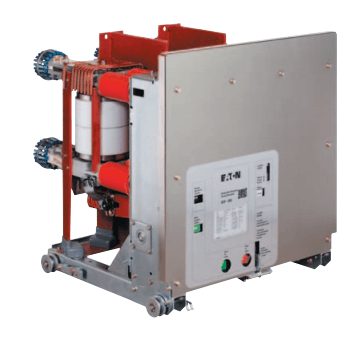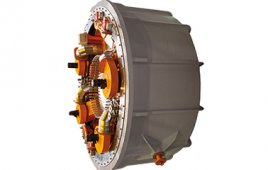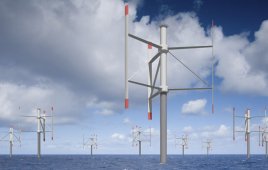This article comes from Eaton and is authored by R. William Long, Consultant Engineer, Eaton,
R. Kirkland Smith, Manager Eaton, and Stephen M. Cary, Principal Engineer, Eaton
Generator circuits experience conditions that are not common and are certainly more demanding than those experienced in normal distribution circuits. Generator circuits have unique characteristics that require circuit breakers specifically designed and tested for those conditions. To meet this need, the Switchgear Committee of the Institute of Electrical and Electronics Engineers (IEEE) developed and issued a special industry standard to address these unique characteristics. The specific IEEE Standard is C37.013-1997, entitled “IEEE Standard for AC High-Voltage Generator Circuit Breakers Rated on a Symmetrical Current Basis” and C37.013a-2007.

Circuit breakers for generators have unique characteristics that require a specific design and test for their conditions.
This paper summarizes unique and demanding aspects of protecting generator circuits and compares differences between the requirements for generator circuit breakers and those for standard distribution circuit breakers. The superior performance capabilities of generator circuit breakers are summarized in a detailed, side-by-side comparison with the capabilities required of standard distribution circuit breakers. Finally, it will compare the existing standard against the dual logo standard 62271-37-013 D9.3 draft.
Superior performance and versatility are required of generator circuit breakers. Application possibilities continue to grow. The need for generator circuit breakers was first recognized by electric utilities to protect large generating stations, and the first editions of the industry standard were directed to this need. However, many industrial and commercial power systems now include small generators as a local source of power. New applications are arising as a result of the deregulation of the utility industry, and the construction of smaller packaged power plants. Typical applications include:
- Electric utility “black start” generators
- Packaged power plants
- Combined cycle/combustion turbine plants
- Pumped-storage facilities
- Smaller hydro-generating stations
Process industries with on-site generation For most generator circuit applications, consideration must be given to:
- Generator circuit configuration
- High continuous current levels
- Unique fault current conditions
- System-source (transformer-fed faults)
- Generator-source (generator-fed) faults
- Unique voltage conditions
- Very fast rate of rise of recovery voltage
- Out-of-phase switching The demanding service duty requirements for generator circuit breakers are discussed in the following paragraphs.
Finally, a parameter-byparameter comparison is made between the generator class circuit breaker and those of the distribution class circuit breaker, as outlined in applicable C37 standards. Ruoss and Kolarik discussed the reasons for the development of the first industry standard for generator circuit breakers in 1993. [6] Finally, the paper will review some of the additional and expected changes that will be required of generator circuit breakers.
For the rest of the five-page paper: https://goo.gl/fNj1ou
Filed Under: Generators



